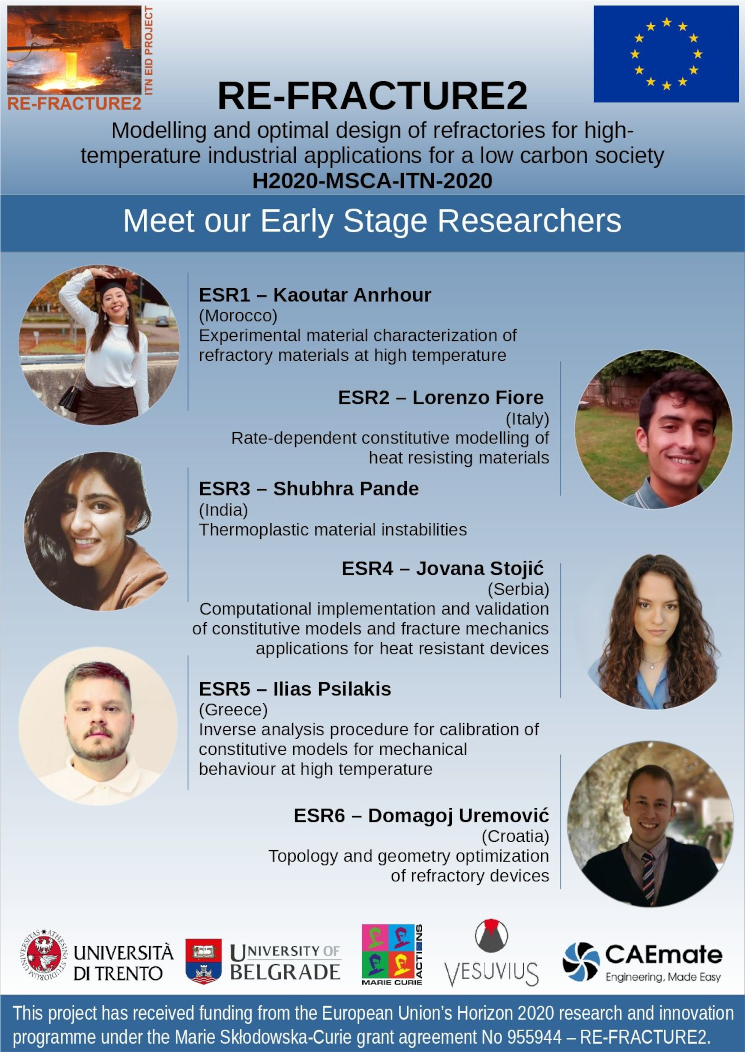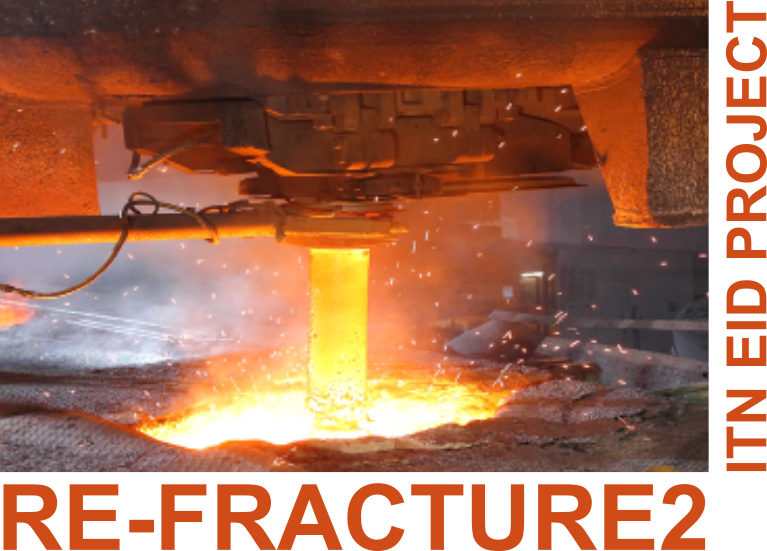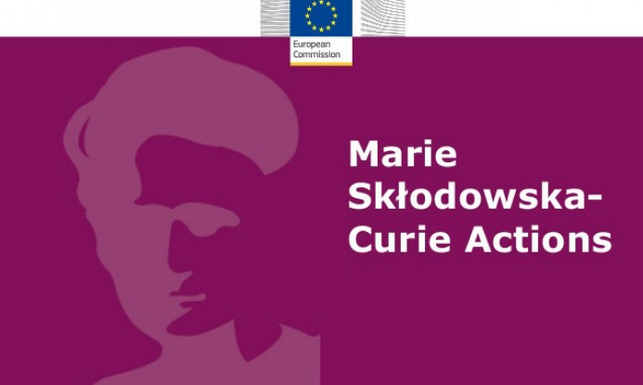
Project Homepage
| Topic | MSCA-ITN-2020 - Innovative Training Networks |
| Programme | H2020-EU.1.3.1. - Fostering new skills by means of excellent initial training of researchers |
| Funding Scheme | MSCA-ITN-EID - European Industrial Doctorates |
| Grant agreement ID: | 955944 |
| Coordinator | Prof. Andrea Piccolroaz |
| Project Funding | € 1 471 290,48 |
| Start Date | 1 January 2021 |
| Duration | 48 months |
PROJECT DESCRIPTION
Improved refractory models for sustainable steel production
The steel industry has long held a strategic place in the EU economy, fostering innovation and growth and providing employment opportunities. To keep up with the increasing demand for steel, it is important to reduce the environmental impact of steel production. The overarching objective of the EU-funded RE-FRACTURE2 project is to develop new computational models for refractory materials that should enable for the first time the simulation of their behaviour over the entire working temperature range. The models will serve as input to the design of components such as refractory nozzles, plates, ladle and tundish slide gate systems with increased energy savings and less production waste. The project will train a new generation of designers who will help Europe achieve sustainable growth in low-carbon society.
Objective
Population growth is combined with unprecedented improvements in standards of living for developing countries so that a massive demand for steel is expected for the construction of new infrastructures. This is going to produce a massive waste of energy and CO2 emission which cannot be tolerated by the world’s ecosystems. Indeed, steel production requires enormous amounts of energy and resources and consequently is a major source of pollution in terms of CO2 emission and waste production. Therefore, improvement and optimization of steel production targeted to sustainability and to the reduction of its eco-footprint are of crucial importance, if Europe is to maintain on the one hand its own steel industry and the environmental challenge on the other. In this sector (and others which deal with high-temperature liquids, e.g. aluminium, glass, molten salts in thermal solar power stations) the performance of refractory materials and related components plays a key role in energy efficiency, waste reduction and processing times. In order to drastically reduce the overall CO2 emissions from the production of steel, the development of breakthrough technologies is crucial. The overarching objective of the RE-FRACTURE2 project is to derive new computational models for refractory materials, which will make possible for the first time to simulate in-silico their behaviour over the whole of working temperature range. These models will be a breakthrough in the design of components like refractory nozzles, plates, ladle and tundish slide gate systems, which will directly translate to energy savings, waste reduction and decreases in pollution and CO2 emission, together with safety improvements. This goal will be achieved by the training of a new generation of "environment enthusiast designers" who will keep Europe to be the leading country in sustainable growth for a low carbon society.

ACKNOWLEDGEMENT

|
|
Contacts
Prof. Andrea Piccolroaz
|
Follow us on our social media! |


